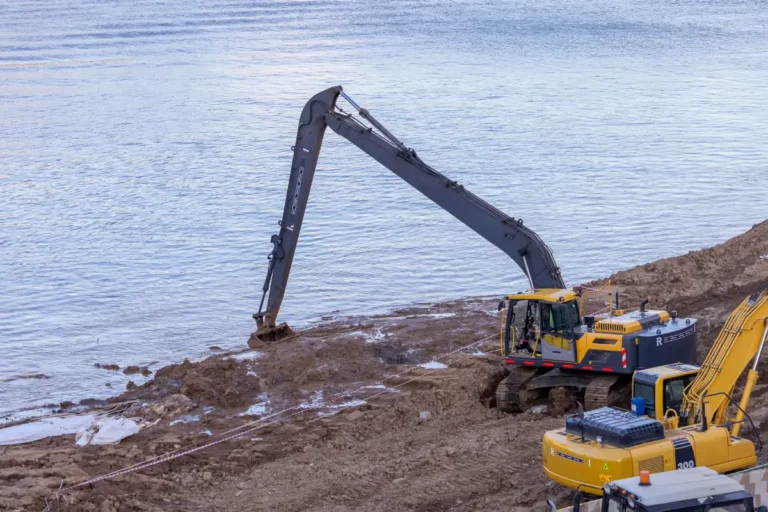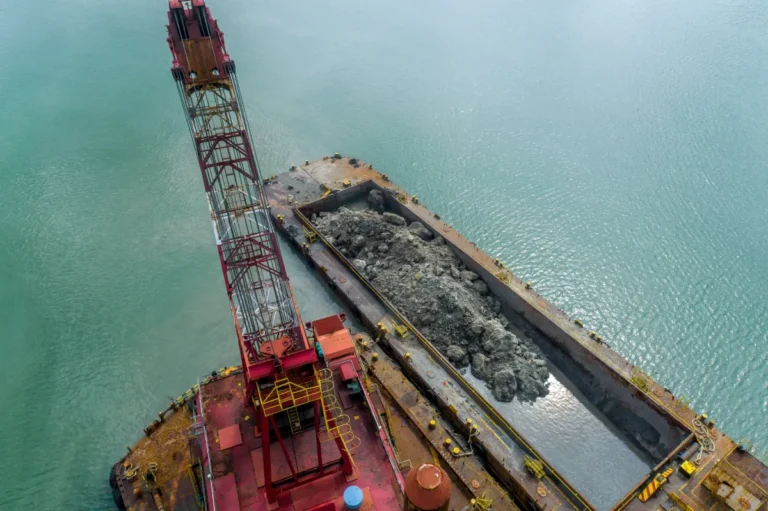Hydraulic dredging is a highly efficient method for sediment removal, particularly suited for large-scale projects where speed, cost-effectiveness, and minimal environmental impact are crucial. Using water jets and suction, this method transports sediment as a slurry through pipelines, making it ideal for projects that require continuous operation over extended periods. Unlike traditional mechanical dredging, hydraulic dredging can handle a wide range of sediment types, from soft silts to denser, more compact materials. It is widely used in industries such as mining, oil and gas, and municipal infrastructure, where preserving waterway functionality and environmental integrity is essential. This blog explores the benefits, real-world applications, and performance advantages of hydraulic dredging, providing insight into how this technology is revolutionizing sediment removal across various sectors. Whether you are involved in procurement, project management, or environmental compliance, understanding the advantages of hydraulic dredging is vital for making informed decisions on your next sediment removal project.
Hydraulic Dredging – An Overview
Definition and Process
Hydraulic dredging is a widely used method for sediment removal that involves utilizing water jets and suction to loosen sediment from the bottom of water bodies, such as rivers, lakes, or harbors. The sediment is then transported as a slurry through pipelines to a designated disposal area. This process starts with high-pressure water jets that agitate the sediment, making it easier to lift. Once the sediment is loosened, a hydraulic dredge equipped with a suction system draws the sediment into the dredge pump, where it is pumped through the pipeline. The slurry is then conveyed to a location where the sediment can be deposited or further processed. Hydraulic dredging is highly efficient, making it an ideal choice for large-scale sediment removal projects in both industrial and municipal settings.
Key Equipment
Several types of hydraulic dredging equipment are critical for effective sediment removal. The core piece of equipment is the hydraulic dredge, which consists of a pump, suction system, and pipeline. The dredge pump is responsible for creating the suction necessary to draw sediment into the system, where it is mixed with water to form a slurry. Pipelines transport the slurry over long distances, ensuring that the sediment is efficiently moved from the dredging site to the disposal area. Boosters may be used to maintain the necessary pressure throughout the pipeline, ensuring a smooth flow of the slurry, especially when dealing with long pipeline systems. These pieces of hydraulic dredging equipment are designed for both versatility and durability, capable of handling a wide range of sediment types, including soft silts and dense materials.
Comparison to Other Dredging Methods
When compared to other dredging techniques, hydraulic dredging offers unique advantages, particularly for large-scale sediment removal. Mechanical dredging relies on physical tools such as clamshell buckets or excavators to scoop up sediment, which can be less efficient for continuous operations and large volumes. In contrast, hydraulic dredging can remove sediment continuously without requiring physical excavation, which makes it ideal for removing large volumes of soft sediments. Another method, hydrodynamic dredging, utilizes agitation to suspend sediment in the water column, allowing currents to carry it away. However, hydraulic dredging is often preferred because it allows for more precise control over the sediment removal process and is better suited to a variety of sediment types, from soft silts to dense muds. Additionally, hydraulic dredging tends to be more cost-effective for extensive projects, as it is more efficient in terms of time and labor compared to mechanical methods.
Benefits of Hydraulic Dredging for Sediment Removal
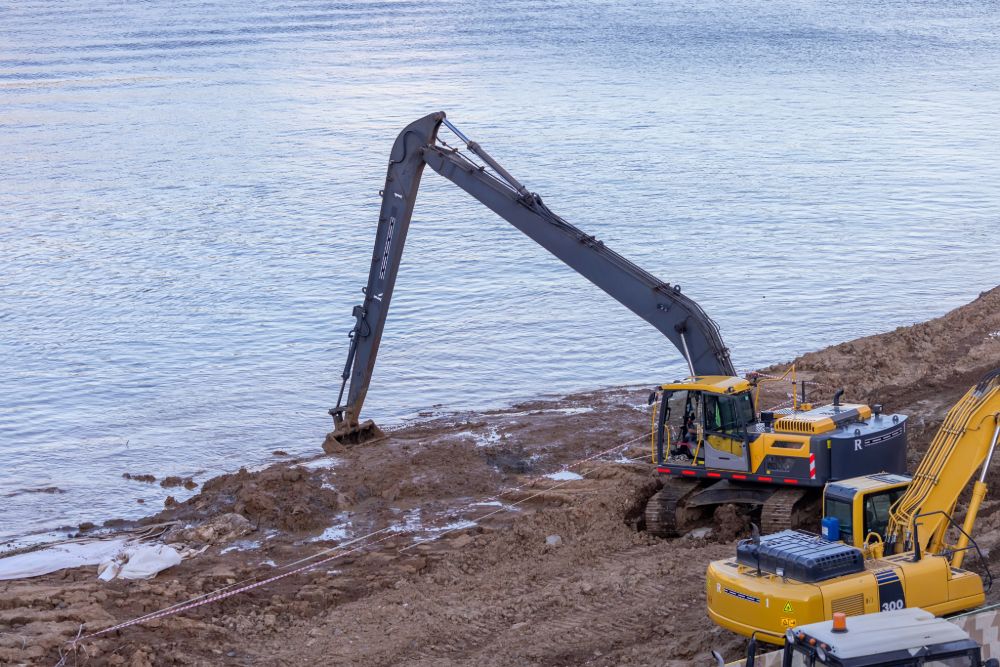
Efficiency in Large-Scale Projects
One of the most significant advantages of hydraulic dredging is its ability to handle large volumes of sediment quickly and efficiently. The method utilizes powerful hydraulic dredges equipped with high-capacity pumps and suction systems to remove sediment from the bottom of water bodies continuously. This continuous operation ensures that extensive sediment removal projects can be completed in a fraction of the time required by mechanical dredging methods. Whether it’s for deepening harbors, clearing navigational channels, or maintaining large reservoirs, hydraulic dredging offers unmatched efficiency for large-scale projects, minimizing downtime and maximizing throughput.
Cost-Effectiveness
Hydraulic dredging is generally more cost-effective than mechanical dredging, particularly for projects involving the removal of large volumes of sediment. The efficiency of hydraulic dredging equipment, which can continuously handle high sediment volumes, reduces the need for manual labor and increases operational efficiency. Additionally, the ability to transport sediment via pipelines to disposal sites minimizes the need for costly equipment such as barges, which are often required in mechanical dredging. When factoring in the reduced need for site setup, labor costs, and equipment maintenance, hydraulic dredging proves to be a more affordable solution, especially in large or ongoing projects.
Ability to Remove a Variety of Sediment Types
Hydraulic dredging is a highly versatile method capable of handling a wide range of sediment types, from soft silts and clays to denser, more compacted materials. The suction-based mechanism enables the hydraulic dredge to adapt to varying sediment consistencies, making it effective in different waterway conditions. This adaptability is crucial for projects where sediment composition varies across the dredging area. Whether dealing with loose, fine-grained sediments in harbors or dense mud in industrial applications, hydraulic dredging equipment can efficiently handle the task without compromising performance, offering an all-encompassing solution for diverse sediment removal needs.
Environmental Impact
Hydraulic dredging is often preferred for projects in sensitive environmental areas due to its minimal disruption to the surrounding ecosystem. The use of water jets to loosen sediment before suction minimizes the physical disturbance to the bottom of the waterway. Unlike mechanical dredging, which can cause significant habitat destruction through excavation, hydraulic dredging creates less turbulence and reduces the likelihood of disturbing aquatic habitats. This makes hydraulic dredging a favorable option in areas that require environmental preservation, such as fish habitats, wetlands, or locations where dredging must be done in an environmentally responsible manner. While hydraulic dredging can cause temporary turbidity in the water, its ability to minimize long-term disruption makes it a better choice for projects that prioritize ecological sustainability.
Real-World Applications of Hydraulic Dredging for Sediment Removal
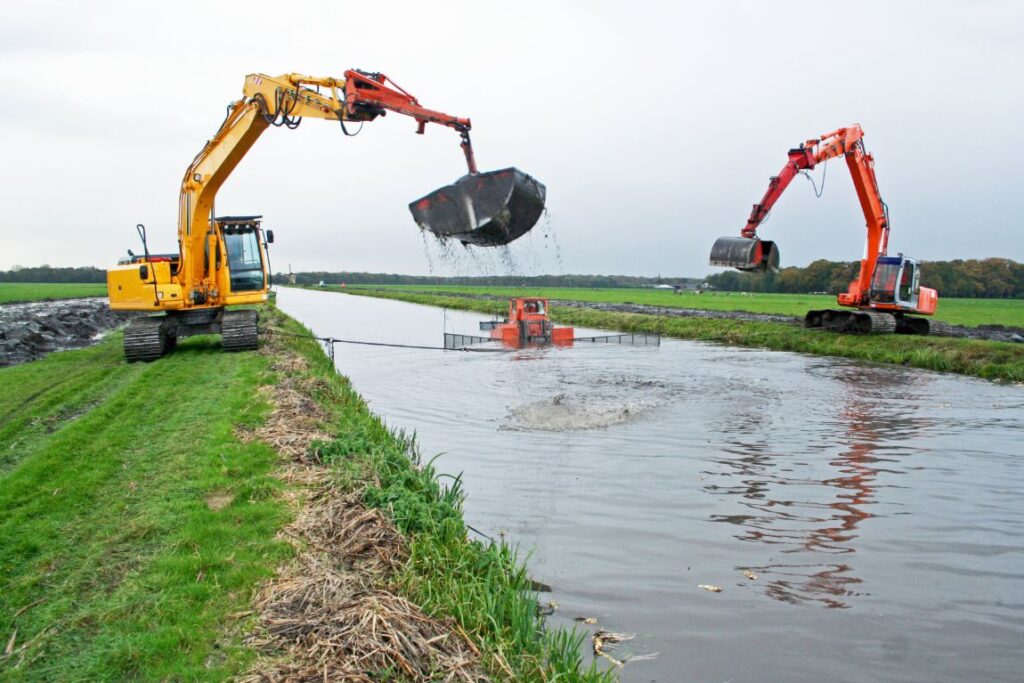
Mining
In mining operations, hydraulic dredging plays a crucial role in ensuring the integrity of water sources and maintaining safe, operational conditions. Sediment buildup in water bodies near mining sites can lead to reduced water quality, hinder water flow, and impact mining operations. Hydraulic dredging is used to remove excess sediment from rivers, lakes, and reservoirs, preventing blockages in water intakes and preserving vital water resources. By utilizing hydraulic dredging equipment to remove large volumes of sediment efficiently, mining operations can maintain the necessary water depth and quality, thereby supporting ongoing operations and protecting the surrounding environment. Additionally, hydraulic dredging helps to manage sediment runoff, ensuring that tailings and other mining byproducts do not affect nearby ecosystems.
Oil & Gas
Offshore and inland oil and gas projects greatly benefit from hydraulic dredging in the maintenance and management of water intakes, pipelines, and navigation channels. Over time, sediment can accumulate around water intakes and pipelines, potentially obstructing flow and increasing the risk of equipment damage. Hydraulic dredging equipment is deployed to clear these sediments, ensuring that water intake systems remain unobstructed and pipelines operate efficiently. In offshore projects, hydraulic dredging is also used to maintain navigation channels, ensuring vessels can safely access drilling sites. The ability of hydraulic dredging to handle large volumes of sediment quickly and with minimal disruption makes it an ideal solution for the high demands of the oil and gas industry, ensuring smooth operations and minimizing downtime.
Municipal and Naval Infrastructure
Hydraulic dredging plays a vital role in maintaining harbors, canals, and navigational channels used by government and military organizations. Over time, sediment buildup in these areas can impede shipping lanes, reduce navigational safety, and damage infrastructure. By utilizing hydraulic dredging equipment, municipalities and naval authorities can efficiently remove sediment and debris, ensuring that critical waterways are clear and accessible. This process helps to maintain the safety and functionality of harbors and canals, which are essential for commercial and defense activities. Furthermore, hydraulic dredging can be used to restore water depths and prevent sediment from accumulating in locations where public safety and infrastructure reliability are paramount.
Environmental Cleanup
Hydraulic dredging is also an essential tool in environmental cleanup projects, particularly when dealing with hazardous or contaminated sediments. Contaminants such as heavy metals, chemicals, and oil residues can accumulate in water bodies, posing serious risks to aquatic ecosystems and human health. Hydraulic dredging equipment is used to safely remove these sediments, reducing pollution and facilitating the restoration of water quality. In addition to its effectiveness in cleaning up contaminated sites, hydraulic dredging minimizes ecological disruption by reducing the physical disturbance to aquatic habitats. This makes it a preferred method for environmental remediation efforts, where both efficiency and environmental sensitivity are essential. Whether applied to rivers, lakes, or coastal areas, hydraulic dredging provides a reliable and environmentally responsible solution for cleaning up polluted waterways.

Performance Advantages of Hydraulic Dredging in Sediment Removal
Continuous Operation
One of the key performance advantages of hydraulic dredging is its ability to provide continuous sediment removal throughout the project lifecycle. Hydraulic dredging systems are designed to operate 24/7, significantly increasing productivity and efficiency. Unlike mechanical dredging methods, which often require intermittent breaks for equipment maintenance or sediment handling, hydraulic dredges can maintain a steady flow of sediment removal. This continuous operation ensures that large-scale sediment removal projects progress rapidly, making hydraulic dredging an ideal solution for time-sensitive tasks. The scalability of hydraulic dredging also enables projects to adapt to varying sediment removal needs, ensuring consistent progress even as conditions change throughout the project’s duration.
Reduced Operational Downtime
Another notable benefit of hydraulic dredging is the reduced need for frequent equipment maintenance. Unlike mechanical dredging, which relies on physical tools such as buckets and excavators, hydraulic dredging utilizes a system of pumps, suction, and pipelines to move sediment. This design reduces wear and tear on equipment, leading to fewer breakdowns and less downtime. The less frequent maintenance requirements translate into cost savings and a more efficient use of resources. With fewer parts subject to physical stress and fewer manual operations required, hydraulic dredging equipment is more durable and less prone to mechanical failures, ensuring a smooth and uninterrupted sediment removal process.
Precise Control
Hydraulic dredging offers superior control over the sediment removal process, allowing operators to target specific sediment layers and areas with precision. The hydraulic dredge’s suction system and water jets can be adjusted to control the depth and flow of sediment removal, ensuring that only the intended materials are removed. This precise control is particularly valuable when dealing with layered sediments or sensitive environments where selective sediment removal is necessary. For example, in dredging projects where specific types of sediment need to be cleared without disturbing the surrounding ecosystem, hydraulic dredging provides a more controlled and effective solution. This capability enhances the overall efficiency of the project and minimizes the impact on non-targeted areas.
Speed and Volume
Hydraulic dredging is capable of removing large volumes of sediment at high speeds, making it an ideal solution for time-sensitive projects that require rapid results. The efficiency of the hydraulic dredging system enables it to handle substantial amounts of sediment within a short period, thereby minimizing project timelines. The combination of high-speed removal and the ability to transport sediment over long distances via pipelines makes hydraulic dredging highly effective for large-scale operations. Furthermore, the reduced environmental disruption associated with hydraulic dredging ensures that the sediment removal process remains efficient without negatively impacting the surrounding ecosystem, which is crucial for projects in sensitive areas or where environmental regulations are strict.
Economic Considerations in Hydraulic Dredging Projects
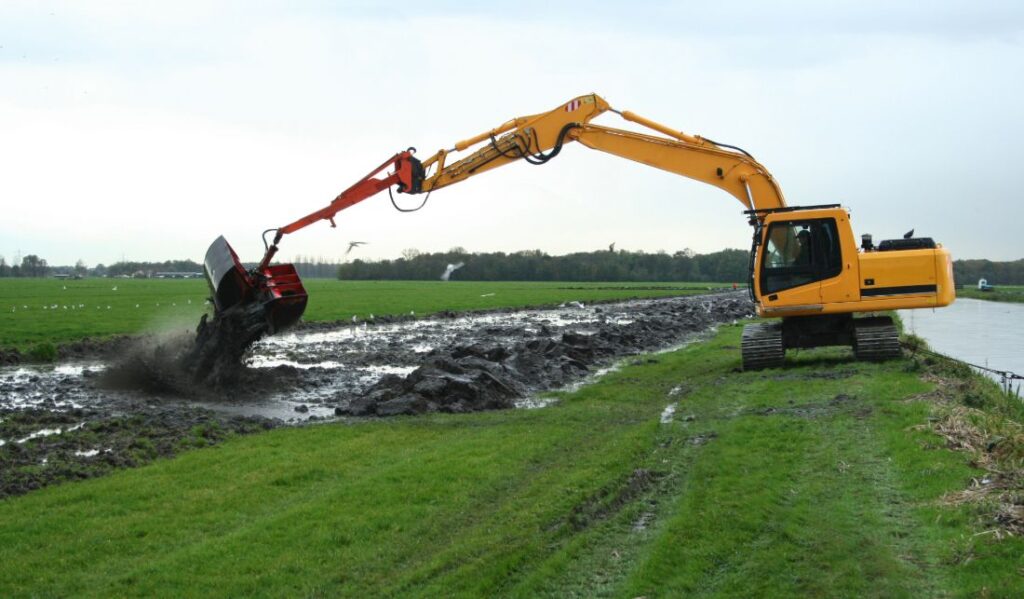
Initial Costs vs. Long-Term Savings
The initial costs of hydraulic dredging typically include the purchase or rental of hydraulic dredging equipment, installation of pipelines, and setup for operation. While these upfront costs may be higher than mechanical dredging, particularly for large-scale projects, hydraulic dredging often proves to be more cost-effective in the long run. The key to this cost efficiency lies in the continuous operation of hydraulic dredging systems. The hydraulic dredge’s ability to handle large volumes of sediment quickly and efficiently, without the need for constant manual intervention, allows for the faster completion of projects. Additionally, hydraulic dredging equipment generally requires less frequent maintenance compared to mechanical dredging, resulting in lower overall maintenance costs throughout the project’s duration. When factoring in efficiency and lower operational downtime, hydraulic dredging offers significant long-term savings compared to mechanical dredging, especially in large and ongoing sediment removal projects.
Return on Investment (ROI)
The long-term return on investment (ROI) from hydraulic dredging is driven by the efficiency of the equipment and its ability to deliver consistent results with minimal operational disruptions. Hydraulic dredging systems, with their high capacity and continuous operation, enable faster completion times, which directly translate into reduced labor and equipment costs. Moreover, hydraulic dredging minimizes the need for expensive auxiliary equipment, such as barges, which are often required for mechanical dredging. Reduced fuel consumption, less manual labor, and fewer equipment failures contribute to substantial savings in operational costs. Additionally, the speed at which large volumes of sediment can be removed further amplifies ROI, particularly in projects that require urgent results. Throughout a project, the efficiency of hydraulic dredging results in significant savings on labor, fuel, and maintenance costs, making it a highly cost-effective solution for sediment removal.
Operational Efficiency and Reduced Environmental Costs
Hydraulic dredging is not only more efficient in terms of sediment removal but also provides indirect cost savings through its reduced environmental impact. Unlike mechanical dredging, which can be more invasive and disruptive to the surrounding ecosystem, hydraulic dredging minimizes physical disturbance to the waterbed, reducing the need for costly environmental mitigation efforts. Hydraulic dredging is particularly effective in sensitive environments, where it can remove sediment with minimal impact on aquatic habitats and local wildlife. This reduced environmental disruption means there is less need for costly cleanup or restoration efforts, ultimately lowering the overall project cost. Additionally, hydraulic dredging’s ability to operate continuously and efficiently reduces the time spent in sensitive areas, further minimizing environmental impact and associated costs. For projects in environmentally sensitive zones, hydraulic dredging offers a financially responsible and sustainable solution.
Hydraulic Dredging Vs Mechanical Dredging. Which is More Suitable for Your Project?
| Feature | Hydraulic Dredging | Mechanical Dredging |
| Method | Uses water jets and suction to create a slurry of sediment, which is then pumped through pipelines. | Uses mechanical tools (e.g., clamshell buckets, excavators) to scoop or dig sediment physically. |
| Material Handling | Moves large volumes of sediment quickly, making it ideal for soft, fine-grained materials such as silt and clay. | Better suited for precise removal of sediment, often used for denser, more compact materials or harder substrates. |
| Speed | High-speed, continuous operation, ideal for large-scale projects with substantial sediment volumes. | Slower and more labor-intensive, with breaks required for equipment handling and sediment transport. |
| Cost | Typically more cost-effective for large-scale projects due to its efficiency and fewer equipment needs. | Often more expensive, especially for larger projects, due to the need for additional equipment (e.g., barges) and more manual labor. |
| Environmental Impact | Less disruptive to the waterbed and surrounding ecosystem, but can increase water turbidity. | More disruptive to the environment, as physical excavation disturbs the bottom and can harm aquatic habitats. |
| Precision | It can be controlled for selective sediment removal in specific layers and areas. | More precise for localized and confined sediment removal, but less adaptable to varying sediment types. |
| Maintenance Requirements | Requires less frequent maintenance, leading to reduced downtime. | Requires more frequent maintenance due to its mechanical nature, leading to increased downtime. |
| Equipment Flexibility | Suitable for large-scale, continuous sediment removal projects. | Better suited for smaller, more targeted dredging tasks, especially in confined or complex areas. |
| Applications | Ideal for maintaining harbors, removing soft sediments, clearing channels, and environmental remediation projects. | More effective for hard sediment removal, specific dredging tasks, or in locations with limited access or confined spaces. |
| Waste Disposal | Slurry is transported via pipeline, reducing the need for additional handling equipment. | Sediment is often loaded into barges or containers, requiring additional transport and handling steps. |
Final Thoughts on Hydraulic Dredging’s Impact
Hydraulic dredging continues to prove itself as a reliable and cost-effective solution for sediment removal across various industries. Its ability to handle large volumes of sediment quickly, coupled with its reduced environmental impact, makes it an ideal choice for projects where efficiency and sustainability are paramount. By offering continuous operation, precise control, and long-term cost savings, hydraulic dredging ensures both operational success and environmental protection. As industries continue to rely on clean and navigable waterways, hydraulic dredging will remain a critical tool for maintaining the functionality and safety of these vital resources.




